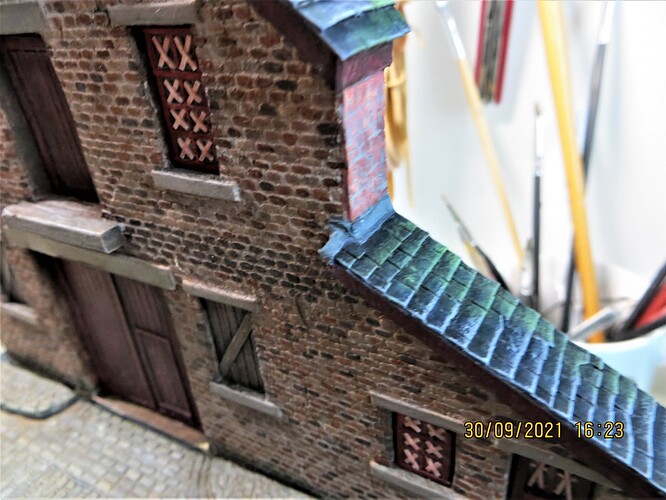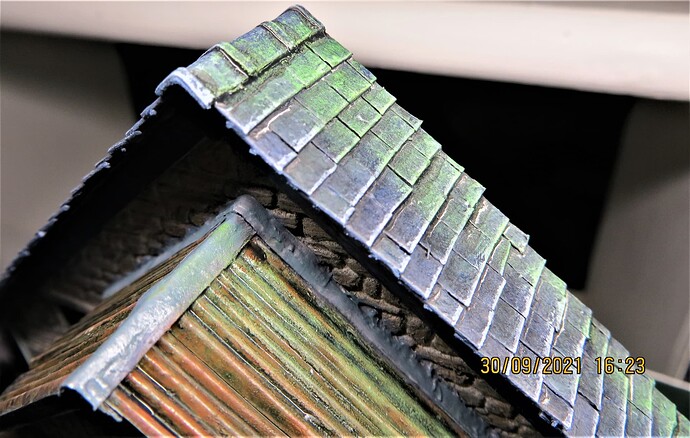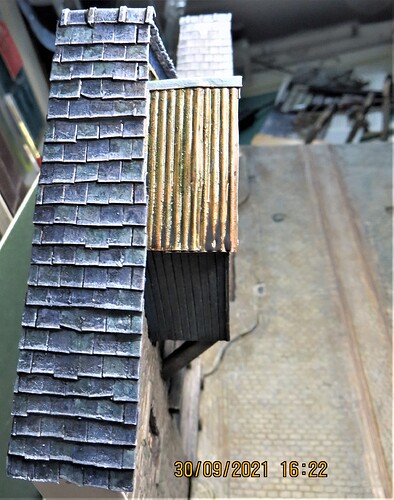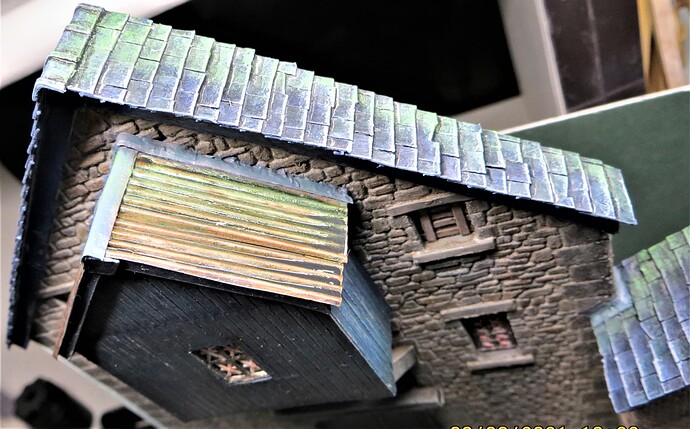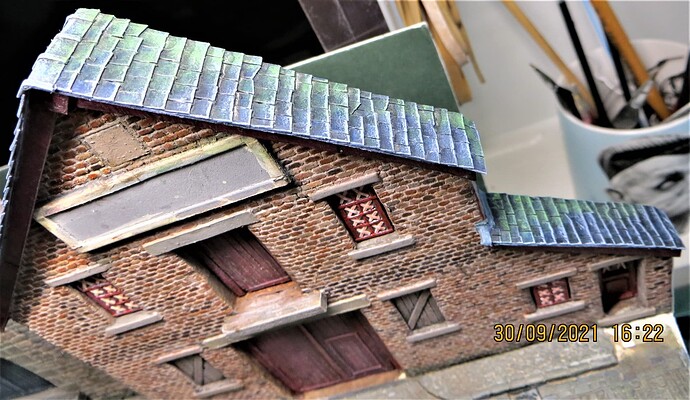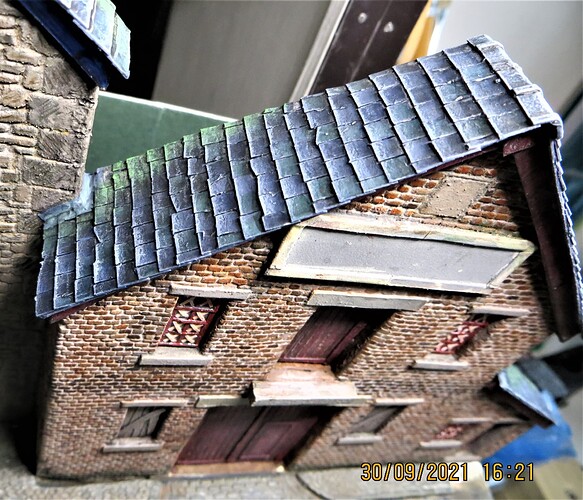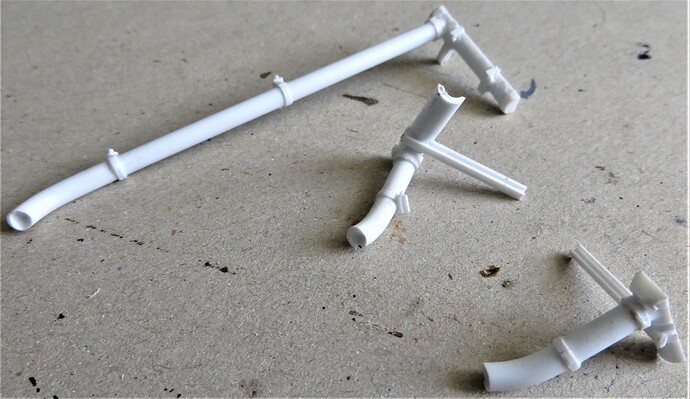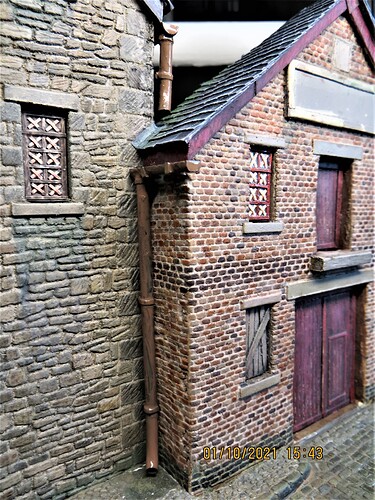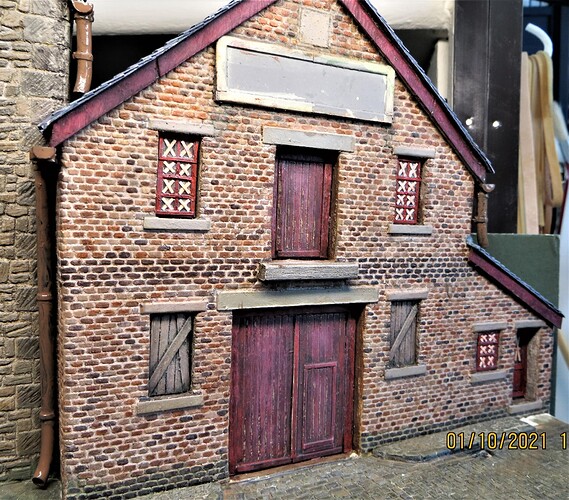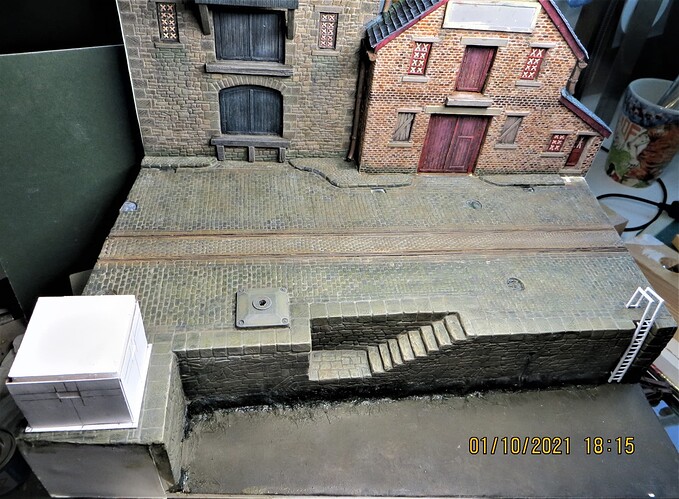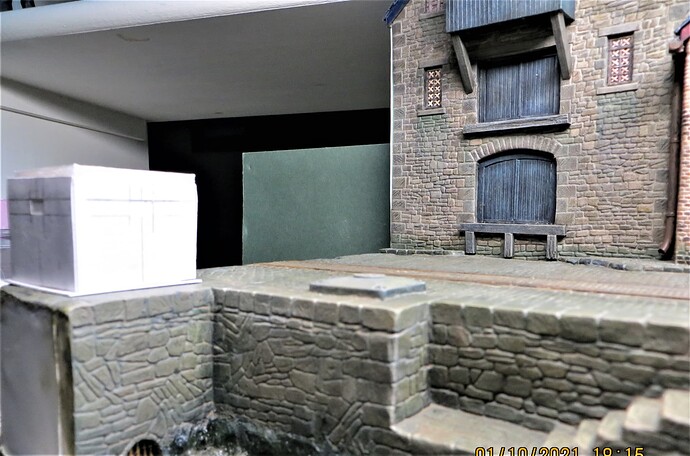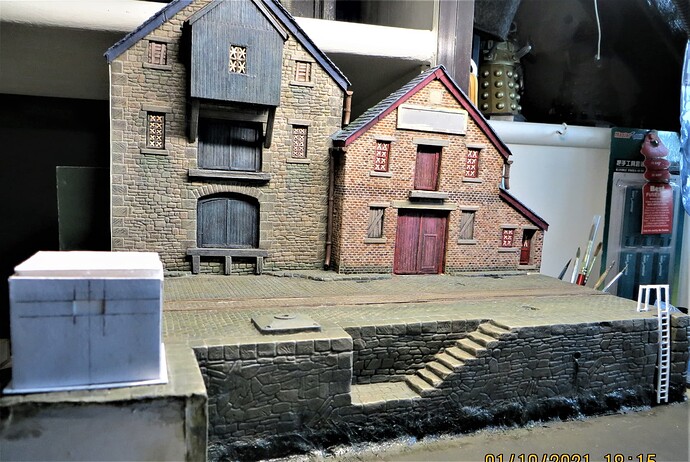Hmmmm…I think there might be a hint in there. ![]()
G, that tape is making more extraordinary this extraordinary diorama.
Hint: many, if not most, windows open; even back in the day when glass was uncommon and orifices were mostly closed with shutters. I understand rather than glazing, translucent rather than transparent materials (thin horn, animal membranes) might also be used to provide light in rather than views out but these too would require the protection of shutters. When touring a replica of Cook’s “Endeavour” I noticed the glazing in the side windows of the main cabin could be removed by sliding upward and stowed below the opening in an identically-shaped frame which at other times would accommodate the wooden deadlight which replaced the glazing in inclement weather.
Lastly, my maternal grandmother (a tiny woman dating back to the late nineteenth century) would clean the outside of her sash windows by raising the lower (inner) sash, maneuvering herself so she was sitting on the outside sill with her feet inside the room and pull the lower sash down to the top of her thighs so she could wash it. She would then push the lower sash to the top of the frame and pull the upper (outer) sash down to the same point as the first, repeat and rinse. This was routine housework in her accommodation on the first and second floors above a brother’s shop…
Cheers,
M
An appreciative thank you guys for your continued support and feedback,  .
.
G 
Thanks for information regarding glazed apertures, it’s amazing how they used to do things in ye olden days, though I suspect your grandmother would turn a few health and safety officers grey with her window cleaning antics,  …oh for those easier days when it was left up to one’s common sense to determine what could and couldn’t be done safely…know thy own limitations,
…oh for those easier days when it was left up to one’s common sense to determine what could and couldn’t be done safely…know thy own limitations,  .
.
G 
Hi all,
Finished tiling the roofs, and am now beginning the process of painting and weathering them.
Cheers,  ,
,
G
Oh wow, that’s looking good and moldy, G.
The good old days lol
Thank you kosprueone,  .
.
G 
Thanks for sharing the photo Tom,  , I’ve done some silly things, risk-wise, when reaching out to paint first and second floor windows (think that’s 2nd and 3rd floors in some countries) but I think that guy has bigger gonads than me,
, I’ve done some silly things, risk-wise, when reaching out to paint first and second floor windows (think that’s 2nd and 3rd floors in some countries) but I think that guy has bigger gonads than me,  .
.
Not sure that even John in his ‘good old days’ would try that,  .
.
G 
Hi all,
Cobbled together something that should pass for rainwater goods from some plastic rod, half-round strips and odds-and-sods of plastic strip,  .
.
Loosely positioned with an initial lick of paint.
Cheers,  ,
,
G
G,
It keeps getting better and better. 
G. Carry on building and pleasing us… I still wonder why you downplay your skills every time, as you are a great builder!!!
Not a chance lol… Reminds me of the old pictures of the skyscraper builders in New York who are just casually walking along girders of the frameworks… No safety gear … hundreds of feet in the air…
Looks great G with the rain goods on. It’s a gift that keeps giving 


Thanks to Ryan, Erwin and John for your kind words, they’re much appreciated,  .
.
G 
Hi all,
An opinion, if I may,  …I’m thinking of adding a small pillbox guarding the quay,
…I’m thinking of adding a small pillbox guarding the quay,  …it gives a bit of variation. I have seen one near Devonport that protects a small harbour…used nowadays for storage of civilian sailing boats…the harbour, not the pillbox,
…it gives a bit of variation. I have seen one near Devonport that protects a small harbour…used nowadays for storage of civilian sailing boats…the harbour, not the pillbox,  , just in case you were wondering,
, just in case you were wondering,  .
.
I think it’s called a ‘Type 26’ (but stand to be corrected,  ), very simple, only about 10’x10’x7’ (3000x3000x2100mm approx.), four small apertures for light machine gun (presuming a bren gun?) and an entrance.
), very simple, only about 10’x10’x7’ (3000x3000x2100mm approx.), four small apertures for light machine gun (presuming a bren gun?) and an entrance.
I have mocked-up the approximate size and location below…
Should I, or shouldn’t I, 
 ?
?
Cheers,  ,
,
G
If you’ve seen it … I think it’s a go…and like you said … It gives a bit of genuine variation…
You should… Definitely should… 
